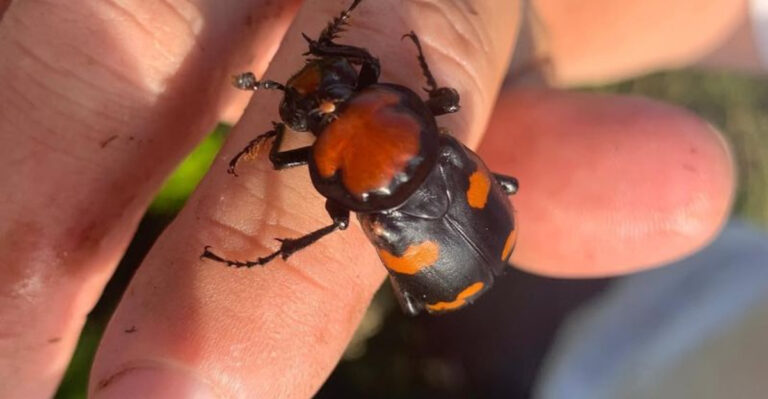7 Creatures Found More Than A Mile Underwater (And 7 You’ll Spot Near The Surface)
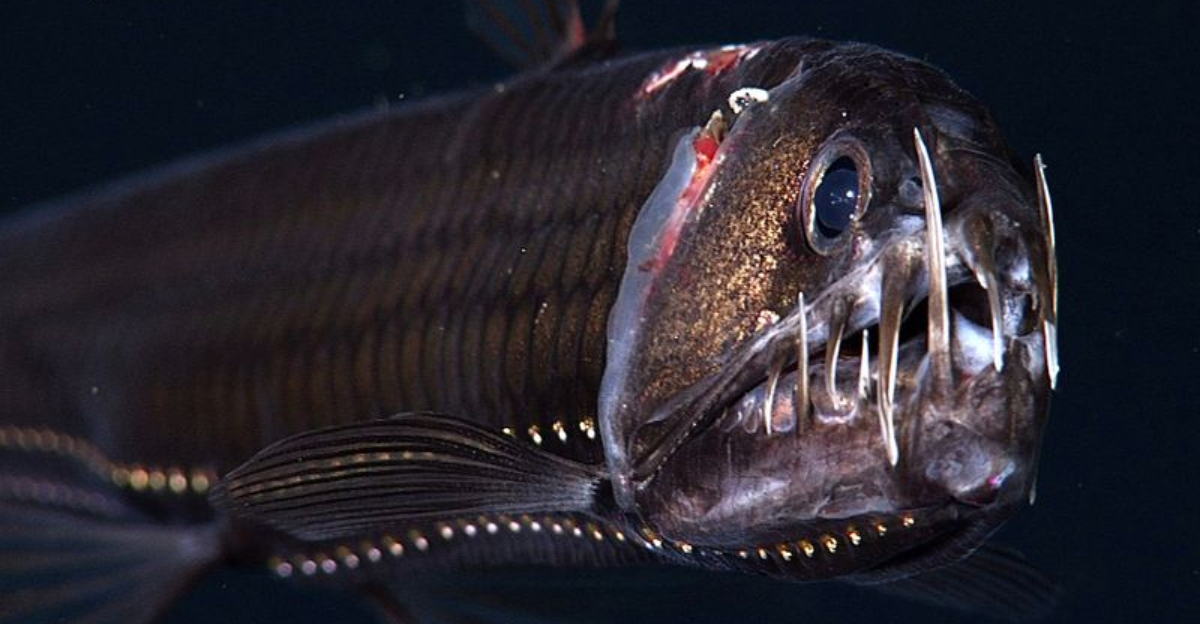
The ocean, Earth’s final frontier, hides mysteries in its depths while showcasing wonders at its surface. From crushing pressures in the midnight zone to sun-dappled shallow waters, marine life has adapted to thrive in these contrasting environments.
Get ready to meet some extraordinary neighbors from both extremes of our blue planet!
1. Ghost-White Dumbo Octopus

These adorable deep-sea dwellers look like they floated right out of a cartoon! With ear-like fins that resemble Dumbo the elephant, they gracefully flutter through the darkest ocean trenches. Unlike their shallow-water cousins, these ghostly octopuses live at depths exceeding 13,000 feet. Their gelatinous bodies withstand extreme pressure while they hunt small crustaceans and worms in the silent deep.
2. Fangtooth Fish: The Fearsome Overbite
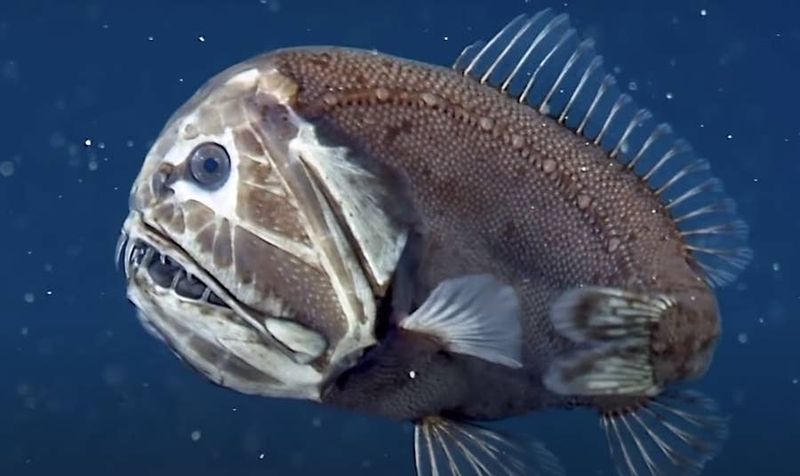
Imagine teeth so long they won’t fit in your mouth! The fangtooth fish solves this problem with special sockets in its brain where its massive fangs slot when it closes its jaws. Swimming at depths of 6,500 feet, these 6-inch terrors might look nightmarish but are actually harmless to humans. Their enormous teeth help them secure prey in a realm where missing a meal could mean starvation.
3. Zombie Worms: Bone-Eating Oddities

No eyes, no mouth, no stomach—yet these bizarre creatures devour whale skeletons on the ocean floor! Also called Osedax, these pink tube worms drill into bones using acid-secreting roots. The females grow to about 1-3 inches while males are microscopic and live inside the females (up to 100 per female!). Discovered in 2002, these deep-sea recyclers play a crucial role in breaking down sunken whale carcasses.
4. Barreleye Fish: Windows To The Soul
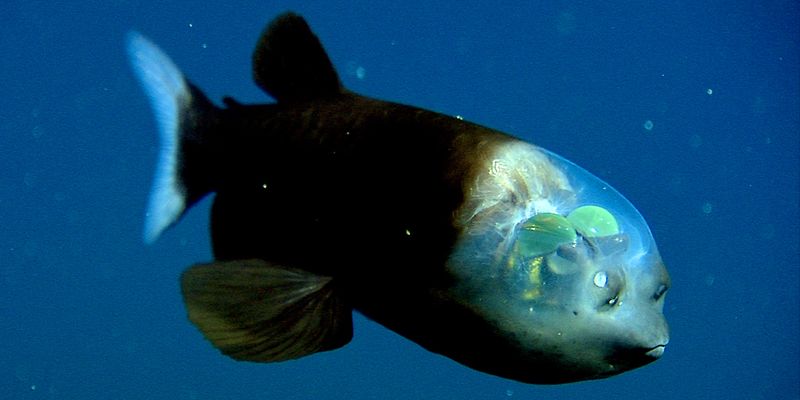
Imagine having transparent skin on your head so you could look up through your skull! The barreleye fish sports this exact feature—a see-through dome filled with fluid where you’d expect a normal fish head. Its tubular eyes point upward inside this dome, scanning for prey above. When food is spotted, the eyes can rotate forward! Living at depths of 2,500 feet, these bizarre fish grow to about 6 inches long.
5. Giant Isopod: Deep-Sea Roly-Poly
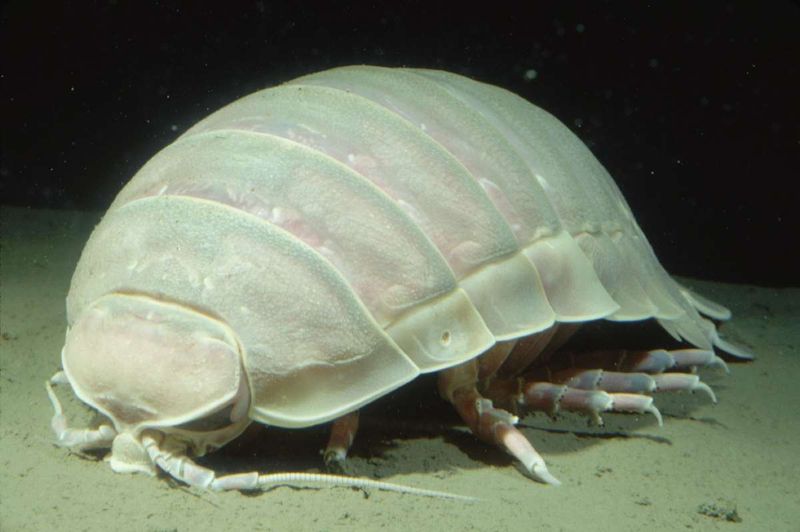
Remember those tiny roly-poly bugs from your backyard? Now imagine one the size of a football! Giant isopods are essentially the supersized cousins of pill bugs, reaching lengths of 16 inches. Scavenging at depths exceeding 7,000 feet, these armored crustaceans can go years between meals. Their tough exoskeletons protect them from the crushing deep-sea pressure while they patiently wait for food to literally drop from above.
6. Viperfish: Nature’s Living Trap

Sporting needle-like teeth longer than its head, the viperfish couldn’t possibly close its mouth—and it doesn’t need to! These fearsome fangs form an inescapable cage for prey lured by the fish’s glowing spine. Hunting at depths of 5,000 feet, viperfish migrate closer to the surface at night. Their stomachs can expand to consume prey twice their size, while their metabolism slows dramatically between meals in the food-scarce abyss.
7. Yeti Crab: Hairy Deep-Sea Farmer
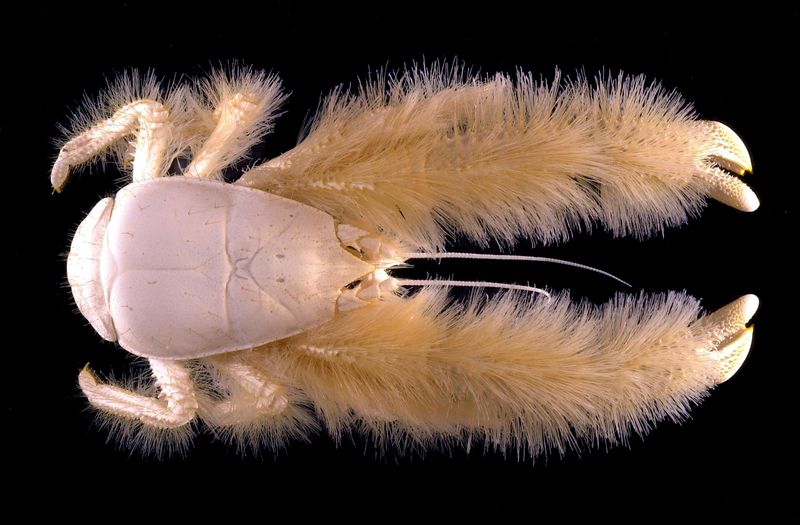
Covered in blonde silky hairs like a mythical yeti, these unusual crabs were only discovered in 2005. But their fuzzy appearance isn’t just for show—it’s actually a bacterial farm! Living near hydrothermal vents more than 7,000 feet down, yeti crabs wave their hairy claws in mineral-rich water. This motion cultivates bacteria on their hairs, which they then scrape off and eat. Talk about growing your own food in extreme conditions!
8. Playful Bottlenose Dolphins
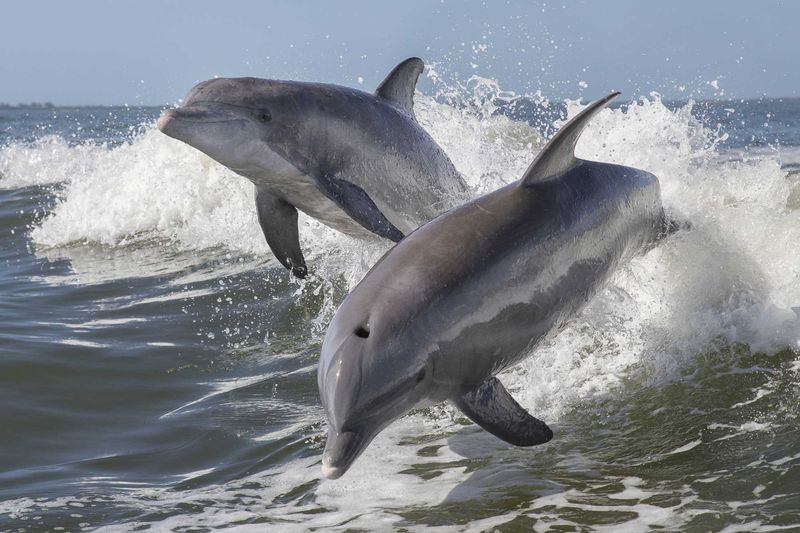
Masters of acrobatics and intelligence, bottlenose dolphins leap through waves with what looks like pure joy. Their permanent “smile” might fool you, but their brain capacity is no joke—they’re among the smartest creatures on Earth! These social mammals live in pods and develop signature whistles (like names). They can recognize themselves in mirrors and have been known to use tools. Coastal populations are often spotted within 50 feet of shore.
9. Portuguese Man O’ War: Beautiful Danger
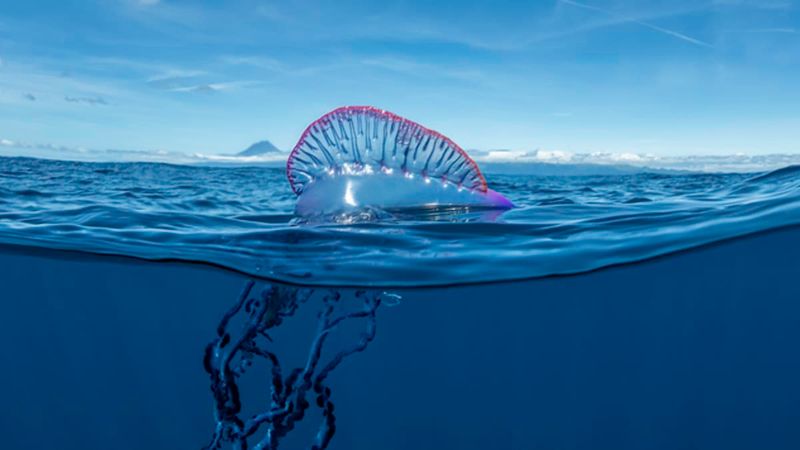
Not a jellyfish but a floating colony of specialized organisms working together! The Portuguese Man O’ War’s translucent blue sail catches the wind like a natural sailboat, while deadly tentacles dangle below. These tentacles can stretch 100 feet underwater and contain enough venom to paralyze small fish. Often mistaken for harmless jellyfish by swimmers, their sting can cause extreme pain to humans. You’ll spot their balloon-like floats bobbing at the surface.
10. Flying Fish: Ocean Aviators
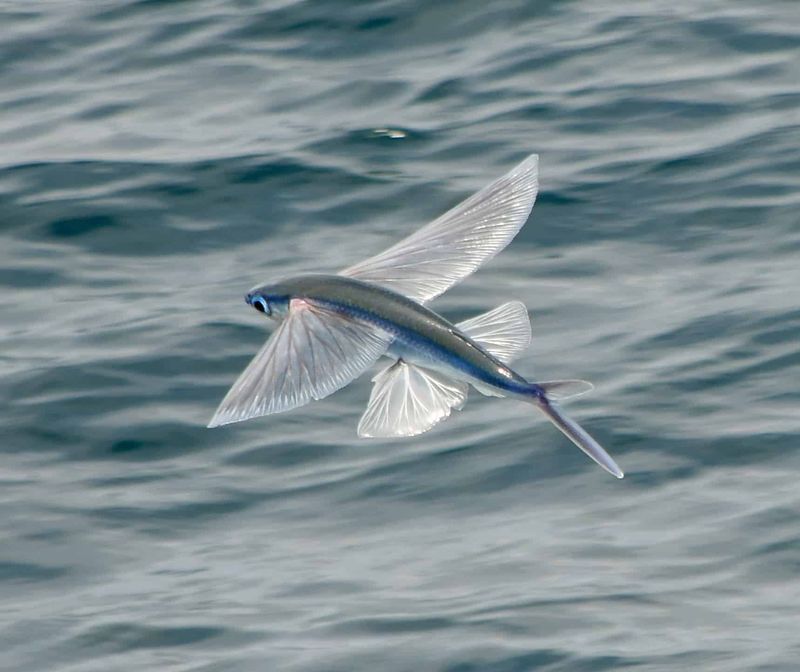
When being hunted by predators, these remarkable fish don’t just swim away—they take to the air! Flying fish can glide up to 650 feet using wing-like pectoral fins, reaching heights of 20 feet above the waves. Before takeoff, they accelerate underwater to 37 mph, then break the surface and spread their “wings.” Some species even taxi on their tails to gain extra distance. Look for them skimming the ocean surface in warm tropical waters.
11. Sunfish: Swimming Pancake
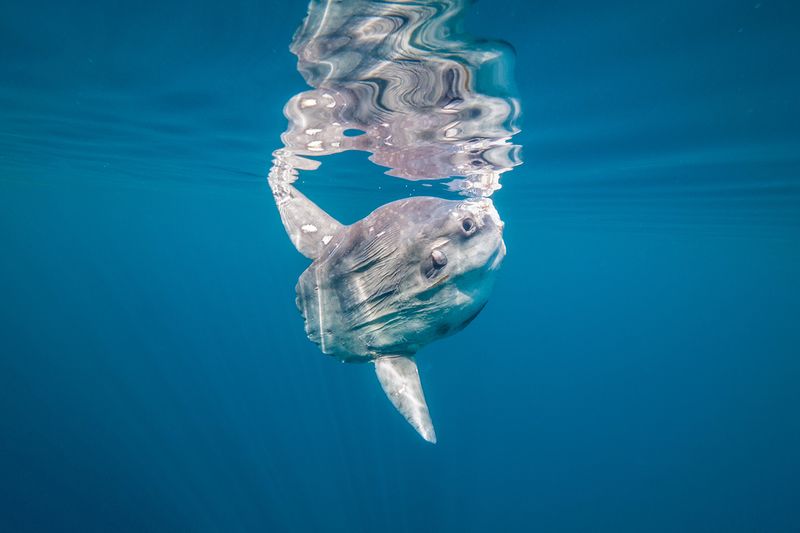
Someone apparently forgot to finish designing this fish! The ocean sunfish (Mola mola) looks like half a fish—flat, round, and often spotted lazily floating sideways at the surface, sunbathing. Despite their bizarre appearance, they’re the heaviest bony fish alive, weighing up to 5,000 pounds. Their diet consists mainly of jellyfish, and they often host dozens of parasites, which is why they surface—inviting birds to clean them off.
12. Sea Otters: Floating Tool-Users
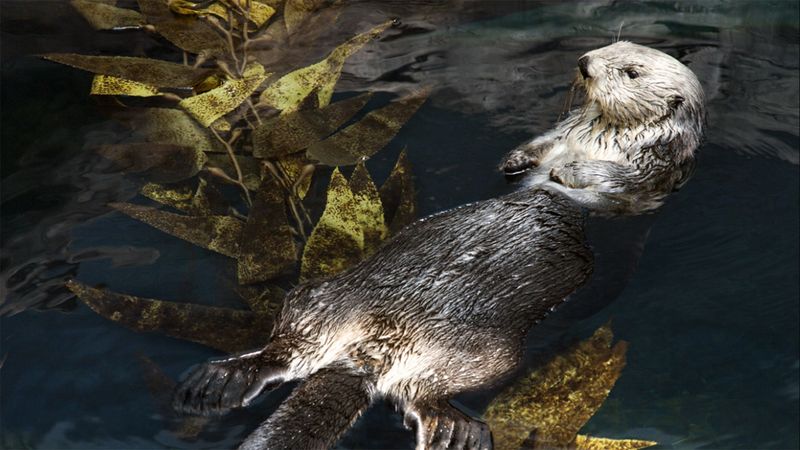
Wrapped in the densest fur of any animal (up to one million hairs per square inch), sea otters float on their backs while using rocks to crack open shellfish on their bellies. They’re nature’s adorable floating workshops! These marine mammals rarely come ashore, preferring to eat, sleep, mate, and give birth in the ocean. To avoid drifting away while sleeping, they wrap themselves in kelp or hold paws in groups called “rafts.”
13. By-The-Wind Sailor: Nature’s Tiny Sailboats
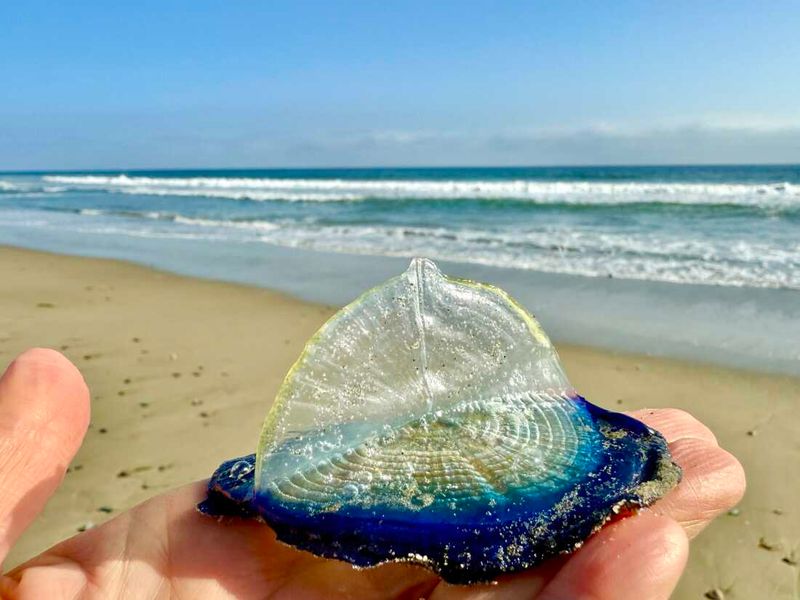
These miniature mariners harness the power of wind with their own built-in sails! By-the-wind sailors (Velella velella) are colonial hydrozoans that float at the ocean’s surface, their clear triangular sails catching breezes. Measuring just 2-3 inches, they appear as blue discs with diagonal sails. Interestingly, some populations have sails angled to the left, others to the right, determining which direction the wind pushes them. They often wash ashore in massive blue armadas.
14. Magnificent Frigatebirds: Pirates Of The Sky

With the largest wingspan-to-body-weight ratio of any bird, frigatebirds are aerial masters that rarely touch water despite living entirely off ocean prey. Males sport a dramatic red throat pouch they inflate like balloons during mating displays. These avian pirates get their name from their habit of harassing other seabirds until they drop their catch. Though they spend days soaring above the ocean, their feathers lack waterproofing, so they can’t actually land on the water!



